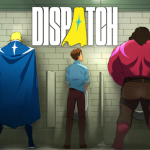
Steal n Catch the Brainrot review
Steal n Catch the Brainrot review
Some games wear their strangeness like a badge of honor, and Steal n Catch the Brainrot falls squarely into that category. It’s not the sort of title you expect to hear about during mainstream showcases, but once word of mouth spreads, it’s the kind of project players can’t resist testing for themselves. Equal parts chaotic experiment and finely tuned arcade challenge, this game manages to tap into the same energy that makes viral indie hits impossible to ignore. I’ve spent a fair amount of time with it across multiple sessions, and what follows is a full breakdown of how it holds up—warts and all.
Core Gameplay
The central idea is straightforward on paper: sneak, grab, and survive while everything around you seems determined to derail your progress. In execution, though, it’s a constantly shifting puzzle where timing, quick thinking, and resource management matter. Unlike generic stealth titles, there’s less emphasis on hiding in shadows and more on reacting dynamically to unpredictable patterns. The levels change enough that no two runs feel quite the same, and that replayability gives the game surprising staying power.
What I especially enjoyed is how the developers lean into controlled chaos. At first, the pace feels overwhelming, almost like the game is daring you to quit. Stick with it, and you begin to recognize patterns, build muscle memory, and develop a rhythm. It creates a rewarding sense of mastery that mirrors old-school arcade design, but with a fresh spin that makes it accessible to a modern audience.
Presentation and Style
The visual direction is deliberately odd, somewhere between surreal sketch art and neon-fueled digital graffiti. It’s not going to win awards for photorealism, but it doesn’t need to—the bizarre style perfectly matches the equally bizarre premise. Character models are exaggerated in just the right ways, environments shift abruptly between vibrant and eerie, and the UI remains clean enough that the madness never becomes disorienting.
The soundtrack deserves a callout. A heavy dose of distorted beats and strange samples accompany every match, and while it can get repetitive during marathon sessions, it nails the off-kilter atmosphere. Audio cues also play an important role in signaling threats, so learning to listen is just as crucial as keeping your eyes peeled.
Difficulty Curve and Accessibility
Not every player will embrace how quickly things escalate. Even on the easiest setting, Steal n Catch the Brainrot asks for precision. That said, it does make small concessions to help ease in newcomers. Checkpoints are placed generously, the tutorial is short but effective, and there are optional assists tucked away in the menu. Hardcore veterans will still find plenty to chew on, but casual players aren’t entirely left behind.
One caveat worth mentioning is that the game is more enjoyable with a controller. Keyboard and mouse work fine, but the control scheme was clearly designed with analog movement in mind. On handheld platforms, the controls translate well, though touch support on mobile can feel cramped during longer play sessions.
Replay Value and Community
A large part of the appeal comes from how unpredictable runs can become. There are unlockable characters and modifiers that change the feel of each session, encouraging experimentation. While the single-player focus is strong, the online community has already begun sharing creative challenges, speedruns, and discussions about possible cheats and mods. The developers haven’t openly endorsed tinkering, but it’s clear players are keen to push the mechanics beyond their intended limits.
Interestingly, the game also thrives in short bursts. You can hop in for a quick round between tasks or grind longer sessions when you want a real test. That flexibility, combined with its lightweight install size, makes it ideal for both PC setups and portable platforms.
Performance
On the technical side, performance is solid across supported devices. On PC, even mid-range rigs handle the game smoothly with minimal stutter. Consoles run the game at a stable frame rate, though textures can occasionally blur during hectic sequences. The mobile port, while surprisingly capable, does demand a decent processor to avoid slowdown. Load times are short across the board, which makes retries painless and keeps the pacing tight.
Verdict
Steal n Catch the Brainrot is a strange beast, and that’s exactly why it works. It refuses to play it safe, instead leaning into its eccentric concept and offering an experience that feels unique in a sea of formulaic releases. While it won’t appeal to everyone—especially those who prefer laid-back experiences—it’s a game worth recommending to players seeking something unpredictable, challenging, and rewarding. If you’re willing to ride out the initial learning curve, you’ll find one of the most intriguing indie experiments of the year.
How to download Steal n Catch the Brainrot
The game is available for digital purchase and in some cases free demos are offered on select storefronts. PC and Mac users can download it through standard platforms, while Android has a mobile port available. Consoles like PlayStation, Xbox, and Switch are supported, though players on unsupported systems may turn to cloud gaming or emulator setups. To install, simply download from your chosen platform, follow the standard setup prompts, and launch once complete. On PC and Mac, make sure you meet minimum requirements: a dual-core processor, 4 GB RAM, and integrated graphics are enough. Android requires at least 3 GB RAM and a mid-range processor. Cheats and mods exist in the community but are unofficial and may affect stability. For those in restricted environments, unblocked versions are circulating online, though these aren’t always reliable or endorsed by the developers.
Pros:
- Addictive, fast-paced gameplay loop that rewards mastery;
- Distinctive art direction that matches the surreal theme;
- Strong replay value with modifiers and unlocks;
- Soundtrack and audio cues enhance immersion;
- Generous checkpoint system reduces frustration;
- Wide range of supported platforms for accessibility;
Cons:
- Steep difficulty curve may discourage casual players;
- Mobile controls feel cramped during extended play;
- Visual repetition in later stages can wear thin;







































